 |
| “Walkie” lift truck |
Background
Lift trucks constitute one of the most common examples of equipment that simultaneously improves productivity and reduces the risk of back injuries. There are some variations on standard lift trucks that are not as widely known. Furthermore, there are some issues with lift trucks that can benefit from improvement, such as the quality of seating, especially in older models.
Ideas and Options
“Walkie” fork lift trucks
 Primary advantages — Powered transport (unlike lifter-transporters, which are manually pushed). Greater lift capabilities than portable lifts. Less expensive than standard forklift trucks. Training requirements for operators are less than for standard forklift trucks.Walk-behind forklift trucks (“walkies”) provide many of the capabilities of standard forklift trucks, but the user walks rather than rides. The primary use is to load other types of lifts, such as fixed height stands or spring-loaded lifts.
Primary advantages — Powered transport (unlike lifter-transporters, which are manually pushed). Greater lift capabilities than portable lifts. Less expensive than standard forklift trucks. Training requirements for operators are less than for standard forklift trucks.Walk-behind forklift trucks (“walkies”) provide many of the capabilities of standard forklift trucks, but the user walks rather than rides. The primary use is to load other types of lifts, such as fixed height stands or spring-loaded lifts.
Standard fork lift trucks
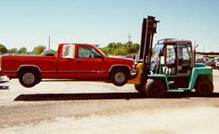 |
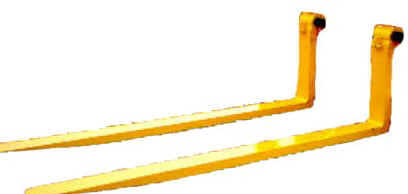 |
| Standard unit with extra long forks | |
The forklift truck is the standard workhorse for material handling in most plants. As with walkie units, the primary use is to load other types of equipment, rather than as a materials lift at a workstation.
Primary advantages — Generally provide more capability than the other items on this list, i.e., more power and more mobility. The front end can be adapted for lifting a variety of types of loads. The example above shows extra long forks to lift exceptionally long loads. Other adaptations include dumpers and portable cranes and hoists.
Primary disadvantages — Expense and training requirements. Not normally used as a stationary lift device at a given workstation.
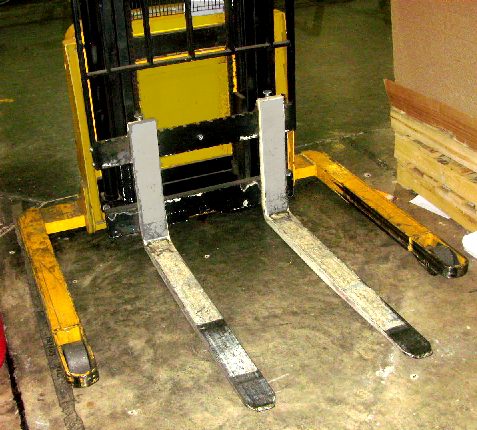 |
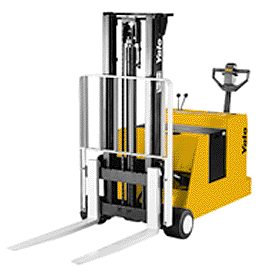 |
| Straddle | Counterbalanced |
There are two strategies used to prevent walkies from tipping forward when lifting a load: (1) outriggers that straddle the load, and (2) counter-balanced models.
Seating
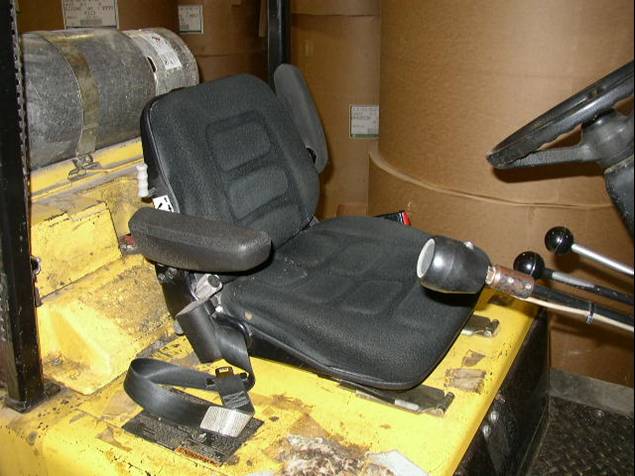 |
|
| Worn out | Good |
Seating can be inadequate, especially in old or heavily used fork trucks. Seats on newer models of fork lift truck and other types of heavy equipment can be excellent. Seats can be retrofitted with improved styles from original and third party vendors.
Controls
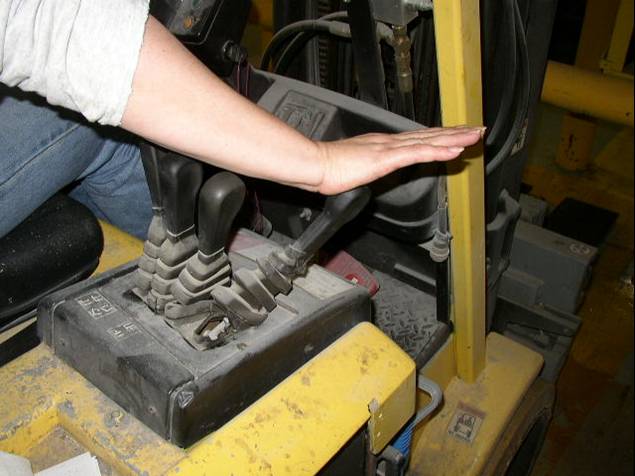 |
|
| Manual | Power assist (joystick) |
Some controls can be difficult to operate or involve highly repetitive motions in some applications. In these cases, power-assisted controls (joysticks) can be helpful.
 |
| Sore neck from driving in reverse |
Driving fork lifts often require driving in reverse for a large portion of the day, which is a problem that is difficult to avoid because of the nature of the work. Some manufacturers provide models with alternative options for seating that can be helpful in these situations.
